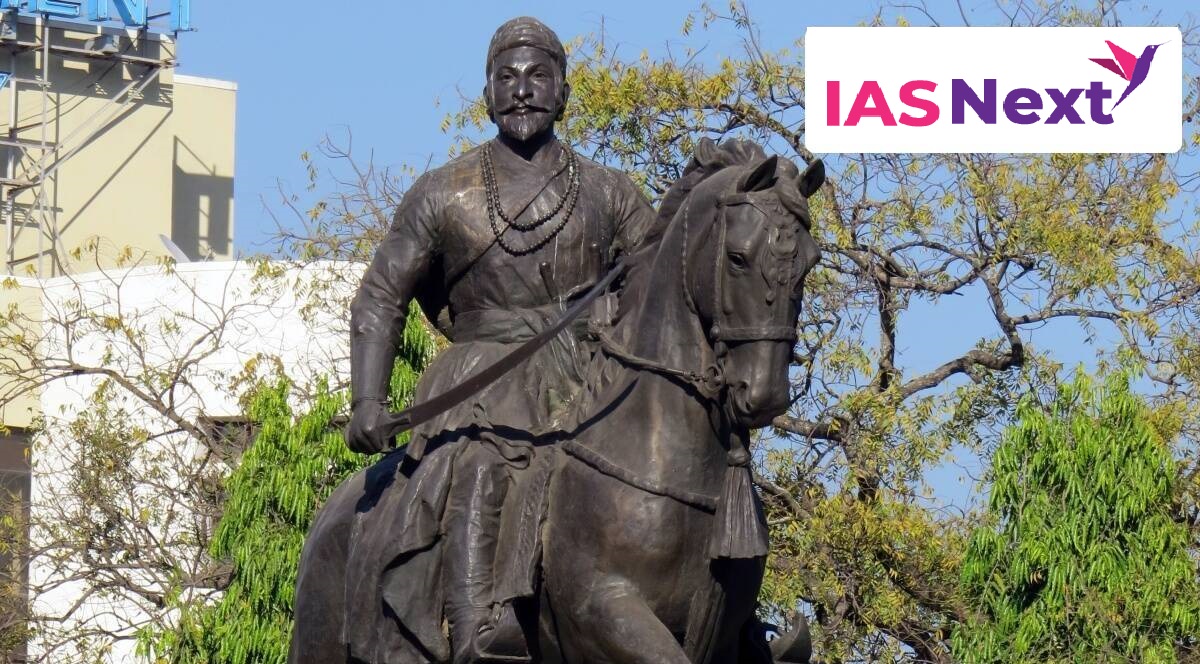CURRENT AFFAIRS
Get the most updated and recent current affair content on Padhaikaro.com
Row over the Shivaji statue in Telangana’s Bodhan town
- IAS NEXT, Lucknow
- 24, Mar 2022

Reference News:-
Section 144 has been imposed in Bodhan town in Telangana after protests turned violent over the installation of a statue of Chhatrapati.
About Shivaji:
Born at Shivner in 1627.
Father: Shahji Bhonsle.
Mother: Jija Bai.
Inherited the jagir of Poona from his father in 1637.
Achievements of Chhatrapati Shivaji:
Initial phase:
- He first conquered Raigarh, Kondana and Torna from the ruler of Bijapur.
- After the death of his guardian, Dadaji Kondadev in 1647, Shivaji assumed full charge of his jagir.
- He captured Javli from a Maratha chief, Chanda Rao More. This made him the master of Mavala region.
- In 1657, he attacked the Bijapur kingdom and captured a number of hill forts in the Konkan region.
- The Sultan of Bijapur sent Afzal Khan against Shivaji. But Afzal Khan was murdered by Shivaji in 1659 in a daring manner.
Military Conquests of Shivaji:
- Shivaji’s military conquests made him a legendary figure in the Maratha region. The Mughal emperor Aurangazeb was anxiously watching the rise of Maratha power under Shivaji.
- Aurangzeb sent the Mughal governor of the Deccan, Shaista Khan, against Shivaji. Shivaji suffered a defeat at the hands of the Mughal forces and lost Poona.
- But Shivaji once again made a bold attack on Shaista Khan’s military camp at Poona in 1663, killed his son and wounded Khan.
- In 1664, Shivaji attacked Surat, the chief port of the Mughals and plundered it.
- A second attempt was made by Aurangzeb to defeat Shivaji by sending Raja Jai Singh of Amber. He succeeded in besieging the fort of Purander.
Treaty of Purander 1665:
- According to the treaty, Shivaji had to surrender 23 forts to the Mughals out of 35 forts held by him.
- The remaining 12 forts were to be left to Shivaji on condition of service and loyalty to Mughal empire.
- On the other hand, the Mughals recognized the right of Shivaji to hold certain parts of the Bijapur kingdom.
Renewed war against Mughals:
- Surat was plundered by him for the second time in 1670.
- He also captured all his lost territories by his conquests.
- In 1674 Shivaji crowned himself at Raigarh and assumed the title Chatrapathi.
Administrative Policies:
He laid the foundations of a sound system of administration. The king was the pivot of the government. He was assisted by a council of ministers called Ashtapradhan.
- Peshwa – Finance and general administration. Later he became the prime minister.
- Sar-i-Naubat or Senapati – Military commander, an honorary post.
- Amatya – Accountant General.
- Waqenavis – Intelligence, posts and household affairs.
- Sachiv – Correspondence.
- Sumanta – Master of ceremonies.
- Nyayadish – Justice.
- Panditarao – Charities and religious administration.
Revenue Policies:
- Lands were measured by using the measuring rod called kathi. Lands were also classified into three categories – paddy fields, garden lands and hilly tracks.
- Taxes: Chauth and sardeshmukhi were the taxes collected not in the Maratha kingdom but in the neighbouring territories of the Mughal empire or Deccan sultanates.
- Chauth was one fourth of the land revenue paid to the Marathas in order to avoid the Maratha raids.
- Sardeshmukhi was an additional levy of ten percent on those lands which the Marathas claimed hereditary rights.
Shivaji was a man of military genius and his army was well organized:
There were two divisions in the Maratha cavalry:
- Bargirs, equipped and paid by the state;
- Silahdars, maintained by the nobles.
In the infantry, the Mavli foot soldiers played an important role.